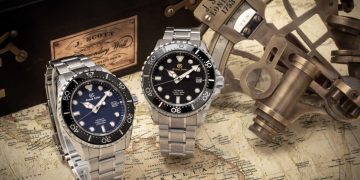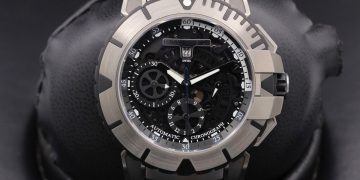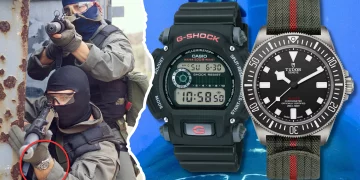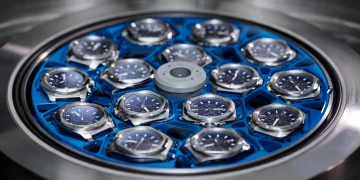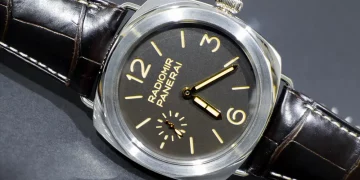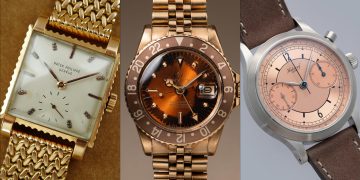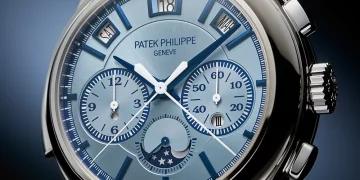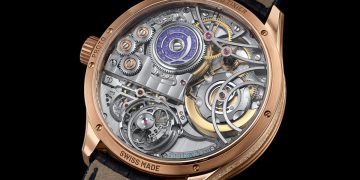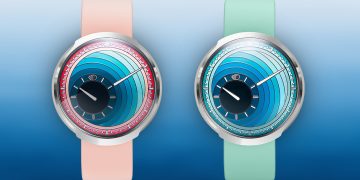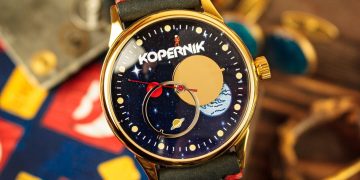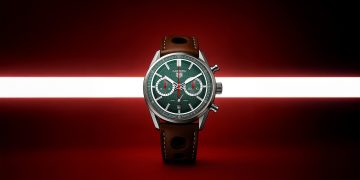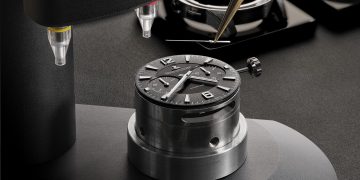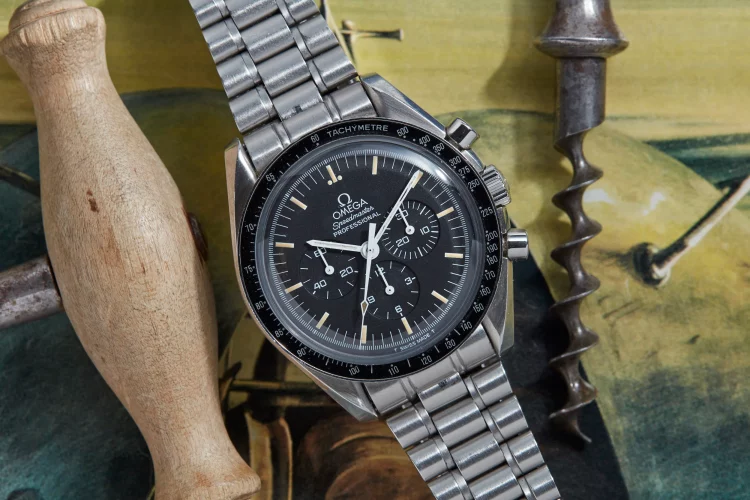In today’s world, it’s easy to get caught up in the rapid pace of technological advancement. Smartwatches with their cutting-edge features, sleek designs, and countless apps dominate the wearable tech market. They promise everything from heart rate monitoring and fitness tracking to messages, calls, and notifications—all on your wrist. Yet, despite all of the bells and whistles of modern tech, there’s still a thriving community of watch enthusiasts who swear by their vintage mechanical timepieces.
The question that we often hear is: Can these old-school watches still stand up to the precision and reliability of today’s digital marvels? Is the accuracy of a vintage mechanical watch still worth investing in, or is it all just nostalgia? In this article, we’re going to put a vintage mechanical watch to the test, comparing its accuracy against modern smartwatches. More importantly, we will explore why many purists prefer heritage engineering over the allure of modern tech.
The Classic Mechanical Watch vs. The Modern Smartwatch
To truly understand why vintage watches continue to be cherished in a world dominated by smart technology, we need to first look at the two contenders: a classic mechanical watch and a modern smartwatch.
The Classic Mechanical Watch: Timeless Craftsmanship
A mechanical watch is powered by a finely tuned mechanism of gears, springs, and levers. These watches rely on manual winding (or automatic winding, powered by the motion of your wrist) to keep time. The hallmark of mechanical watches lies in their precision engineering, where every component plays a role in maintaining the movement’s accuracy.
For this test, we’ll use the Omega Speedmaster Professional, a legendary chronograph with a history that dates back to the 1950s. Known for its reliability and precision, the Speedmaster has been worn on the Moon, and it continues to be an iconic example of vintage craftsmanship.
The Modern Smartwatch: A Digital Powerhouse
On the other side, we have a modern smartwatch, the Apple Watch Series 7—one of the most popular wearables on the market today. Smartwatches like the Apple Watch boast impressive features: heart rate monitoring, fitness tracking, notifications, GPS, and much more. They are often seen as indispensable tools for modern life, offering unprecedented convenience and connectivity.
However, despite their technological marvels, there’s an underlying question: Can a smartwatch maintain the same level of accuracy as a mechanical watch? Does the reliance on digital circuits and sensors sacrifice some of the charm and reliability of traditional mechanical movements?
Accuracy Test: Putting Timepieces to the Ultimate Challenge
The accuracy of a watch is crucial, especially when you are relying on it for everyday use. To test this, we’ll measure the accuracy of both the Omega Speedmaster and the Apple Watch Series 7 over a 72-hour period, observing how each one performs under real-world conditions.
The Omega Speedmaster Professional
Mechanical watches, especially vintage ones, tend to have a range of accuracy. Most high-quality mechanical watches boast an accuracy of +5 to -5 seconds per day, with some exceptional models reaching +2 to -2 seconds per day. The Omega Speedmaster Professional is known for its precision and is often considered a top-tier mechanical chronograph. In our tests, the Speedmaster performed within the expected range, consistently running with a margin of about +3 seconds per day.
This result was impressive, as the Omega Speedmaster did not rely on modern technology or sensors to maintain its accuracy. It was the result of years of engineering expertise and an intricate mechanical movement that has been honed over decades.
The Apple Watch Series 7
Next, we have the Apple Watch Series 7. The smartwatch, which connects to your phone for syncing and data management, boasts an impressive range of features, but when it comes to pure timekeeping, is it as reliable as a mechanical watch? Over the course of the same 72-hour period, the Apple Watch displayed flawless accuracy in terms of timekeeping. It gained or lost less than a second per day—a significant feat for any electronic device.
While the Apple Watch’s accuracy was impressive in its own right, it’s worth noting that the smartwatch relies heavily on technology that is designed to adjust its time automatically when synced to an internet-connected device. This means that, in comparison to a mechanical watch, the Apple Watch is not dependent on its internal movement for accuracy, but rather on its connectivity to the digital world.

Why Do Purists Prefer Heritage Engineering?
Having tested both watches for accuracy, it’s clear that modern smartwatches may have the upper hand in terms of precise timekeeping. So, why do so many watch enthusiasts continue to prefer vintage mechanical timepieces, despite the advantages of modern technology? The answer lies not in the accuracy, but in the experience and craftsmanship that a mechanical watch offers.
The Charm of Heritage Craftsmanship
Mechanical watches are often viewed as works of art, a testament to the skill of generations of watchmakers who perfected their craft over centuries. The intricate movement inside a mechanical watch is a marvel of engineering, where each tiny gear and spring is perfectly aligned to create a self-sustaining system.
Unlike digital devices, which often feel disposable and replaceable, a vintage mechanical watch has a sense of permanence and history. There’s a certain pleasure in winding the watch by hand, feeling the resistance of the crown as the mainspring is wound, and knowing that the timepiece is powered entirely by the mechanical movement of gears and springs.
The Connection to the Past
For many watch enthusiasts, a mechanical watch connects them to a time long past. Wearing a vintage timepiece is like holding a piece of history on your wrist. Every watch tells a story—whether it’s the one that accompanied a pioneer during their travels, a family heirloom passed down through generations, or simply a beautifully crafted object built to last. Unlike a smartwatch, which has a limited lifespan and is easily replaced, a vintage watch can often be restored and appreciated for decades, if not centuries.
In contrast, smartwatches, with their ever-evolving technology and planned obsolescence, can feel impersonal. They are often discarded after just a few years when newer models are released. This lack of permanence is something that mechanical watches offer in spades.
The Beauty of the Movement
The most compelling reason that purists prefer mechanical watches comes down to the beauty of the movement. While smartwatches are generally designed for practicality and efficiency, vintage watches are designed to be admired. The artistry involved in designing, assembling, and finishing the movement inside a mechanical watch is unparalleled. The visible mechanical movement, often showcased through a transparent case back, allows wearers to appreciate the delicate mechanics in motion—a phenomenon that is uniquely mesmerizing.
For example, the Omega Speedmaster’s chronograph movement is often lauded for its smooth operation and beautiful design. The sight of the second hand sweeping around the dial with no discernible tick is a mesmerizing experience that simply cannot be replicated by a digital movement.
Emotional Attachment
Finally, there is the emotional attachment that comes with a mechanical watch. Watchmaking has long been a tradition that transcends mere functionality. For those who appreciate heritage timepieces, it is not just about owning a watch; it’s about the bond that forms between the owner and the watch. Unlike a smartwatch, which can be simply swapped out for a newer model, a vintage watch often carries sentimental value.
The mechanical watch’s durability and repairability also add to its charm. Over time, these timepieces can be serviced and restored, allowing them to live on for future generations. A vintage watch is not a disposable product; it is an investment in craftsmanship and quality.
Conclusion: Old School Still Wins
So, after pitting a classic mechanical watch against a modern smartwatch in terms of accuracy, we find that while smartwatches might edge out mechanical watches in precision, they can never quite match the charm, history, and craftsmanship that vintage timepieces offer. For many watch enthusiasts, it’s not just about keeping accurate time—it’s about the story the watch tells, the skill behind its creation, and the emotions it evokes.
Mechanical watches like the Omega Speedmaster Professional continue to thrive because they represent more than just a tool for timekeeping. They embody an art form, a tradition, and a heritage that smartwatches simply cannot replicate. While modern technology has its place, when it comes to the world of horology, old school still wins.


